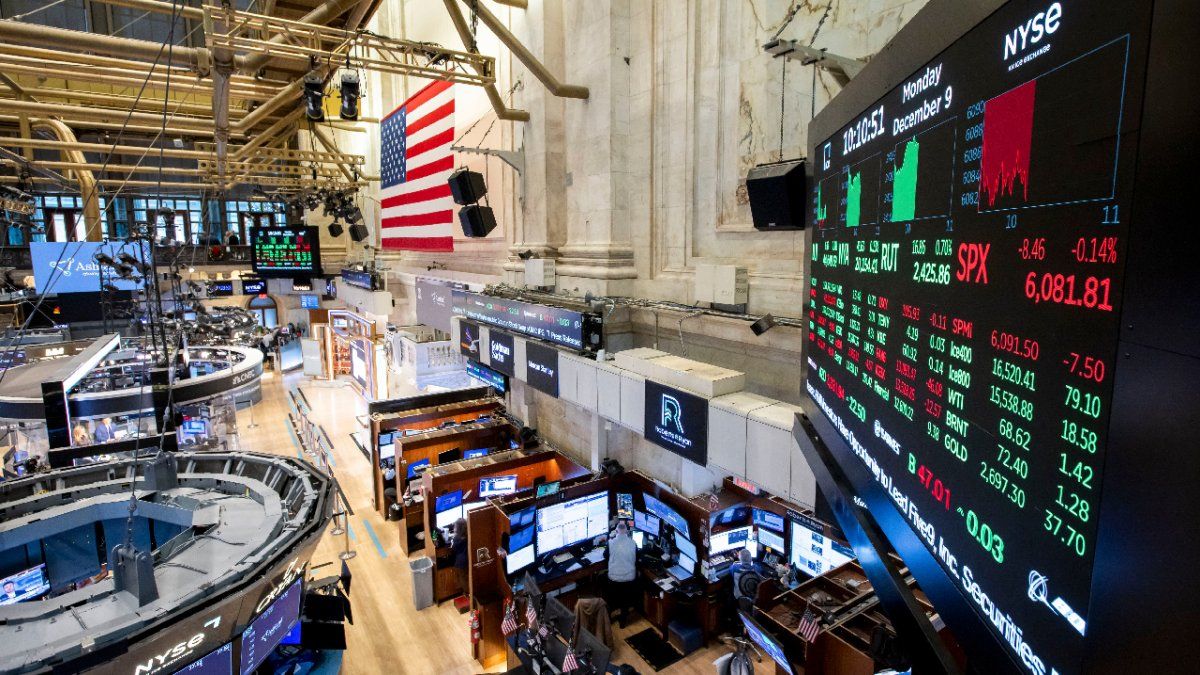The teams of “Research” of the main global investment banks and funds continue to evaluate and recalculate the impact of the new phase of the Donald Trump’s tariff war On the economy and markets, while new voices arise warning about the growing risks of a Bags correction.
For some analysts, bullish bias is clear, for example, in the case of European stock markets, however, they also recognize some positioning signals that suggest that it is close to a short term correction. While the most optimistic consider that it would be a pause of the bullish rally, They do not stop pointing out that to take new positions this risk cannot be ignored.
In this context, Jules Rimmer Marketwacht comments that US investment banks Citigroup and JP Morgan They published reports on the flows and exposure of investors, which indicate that the conditions for a Profit in the short term.
Both notes illustrate that the impulse of US actions remains intact, but the “citi” emphasizes that the debate around American exceptionalism is resurfaceing, while the employment data of last week reinforced the positive feeling. Rimmer also points out that the JP Morgan Global Actions Derivative Team indicated a fairly uninterrupted accumulation of long -term exposure to futures and funds quoted in the stock market that are quoted in the United States. As he explains, the operators seem convinced that the unworthy of the commercial war will be the final result and continue to open new long positions in the US indices. For example, the Nasdaq It stands out in terms of seeming too widespread, registering a 4.6 on the Citi scale from -5 to +5.
It should be remembered that days ago, one of the most prestigious managers of Wall Street predicted a fall in the bags of the 12% in the second semester. According to Fred Imbert from the CNBC, the Barry Bannister strategist of the US investment bank Stifel said in a note to customers that he hopes that the S&P 500 will fall by 12.4%up to 5,500 points, in the second semester.
“We foresee a strong deceleration of the basic GDP of the US in the second semester of 2025, as consumption is slowed (at least 1% year -on -year less) will grow due to the weakness of real income for employment and the fall in capital spending, which has long been associated with the corrections of the S&P 500,” Bannister wrote. Imbert expanded: “The correction we foresee occurs despite the fact that the technological sector is more profitable than in the bubble of the 90s, overvaluation is the problem. The environment that we foresee of deceleration of the underlying GDP with persistent inflation favors a repetition, essentially an echo of the market, of the stagflation operation, which was the one that had a better performance in the correction of the first quarter of 2025.”
This bannister forecast occurs at a time when Washington seeks to reach commercial agreements with other countries before August 1so the Stifel strategist prefers, in this market climate, actions of basic consumption goods, public services and medical care equipment.
In relation to the accumulation of long to future positions, CITI experts explain that the weekly positioning activity relieved by them was inclined almost exclusively towards the purchase. Apparently, the markets awaited the evolution of the tariff issue, so the probabilities of a concerted profits grew.
For its part, JP Morgan also indicated a fairly uninterrupted accumulation of long -term exposure to futures and funds quoted in the stock market that are quoted in the US, according to Rimmer who points out that the consulting advisors of raw materials (known as dynamic investors) often invest in the long term in global variable, but also have bonds of the US Treasury in the US They prefer global currencies against the dollar. It happens that the data published by the Basic Products Trade Commission also confirmed the pronounced change in favor of Nasdaq’s futures, which also revealed that US asset administrators significantly increased their US treasure bond holdings in all maturities.
At the same time that the flow data of the funds quoted in the stock market that are quoted in the US showed inputs close to the average towards strategies of actions and currencies/multi -active, but a strong regional diversification towards Latin America and particularly Brazil. Outside the US, the CITI commented that the positioning of investors continues to have neutral levels, which It suggests a short -term lack of conviction. However, Asia’s data reveal a different panorama: the index Kospi and the A50 from China They experienced the greatest change in positioning in a week of all the analyzed, while the debate on China is intensified as a convincing contrary commitment. On the CITI -5 to +5 scale, the Kospi measures 3.85 and the A50, 3.22.
Source: Ambito




